In today’s Chip Carving Free Online Seminar by Lora Irish we will discuss how to prepare your wood board, how to transfer your pattern, and how to set up a chip carving practice board.
Chip Carving Seminar by Lora Irish
Chip Carving Seminar
Chip Carving Supplies
Chip Carving Graphed Patterns
Chip Carving Hand Positions and Grips
Chip Carving – Triangles and Square Chips
Chip Carving – Straight-Wall Chips
Chip Caved Game and Chess Board
Chip Carving Sampler Pattern Layout
Chip Carving Common Mistakes
Chip Carved Shortbread Cookies
Wood Preparation
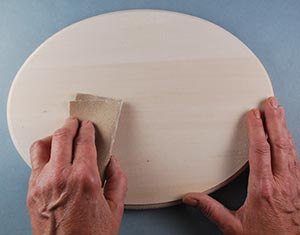 Any wood surface will require a light sanding using 320-grit sandpaper. Rough surfaces can cause your chip knife to grab or hesitate as you make the cutting stroke.
Any wood surface will require a light sanding using 320-grit sandpaper. Rough surfaces can cause your chip knife to grab or hesitate as you make the cutting stroke.
Sand in the direction of the wood grain to avoid adding fine scratch lines from the paper. Wipe the board well with a lint-free dry cloth to remove the sanding dust.
Pattern tracing using graphite paper
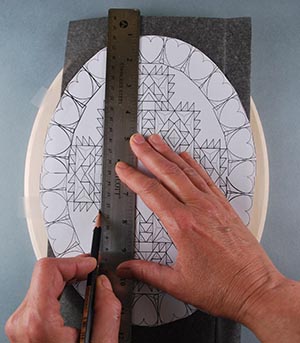 If the pattern is small and you have a printed copy of the design you can use graphite paper to trace the image to the wood. Center the printed pattern to the wood and tape it into place along one edge. Slide the graphite paper under the pattern. Using a ruler, compass, or straight edge and a hard pencil, mark along each line. After the cutting is complete the tracing lines can be erased.
If the pattern is small and you have a printed copy of the design you can use graphite paper to trace the image to the wood. Center the printed pattern to the wood and tape it into place along one edge. Slide the graphite paper under the pattern. Using a ruler, compass, or straight edge and a hard pencil, mark along each line. After the cutting is complete the tracing lines can be erased.
Advantages – Tracing has the advantage when you are transferring your pattern to curved surface or when you want your chips in one oddly shaped area on the wood. In the photo sample the carving board is oval and the pattern has that same oval. Tracing with graphite paper made it easy to cut the pattern along the oval shape and align it properly with the board.
Disadvantages – Hand tracing, even when you use a ruler and compass, does not always give you perfectly matched chip sizes or perfectly straight cutting lines. Take time to double-check your line accuracy before you begin cutting. After the chip carving is complete you will need to remove any remaining tracing lines using a white eraser. For stubborn lines a light sanding with 320-grit sandpaper may be necessary.
Graphing directly to the wood
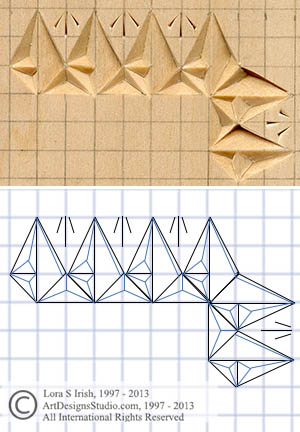 Because most chip carving patterns are geometric they can easily be graphed direct onto the board.
Because most chip carving patterns are geometric they can easily be graphed direct onto the board.
Using a small t-square, a ruler, and hard pencil mark the grid to your board. The size of each unit determines the final size of the chip motif – a 1/3” space will create larger chip motifs than a 1/4” spacing. With a soft pencil, to mark darker lines, pencil in your motif using the grid guidelines.
Advantages – Creating the pencil graph directly to the wood means that your knife is cutting directly into each chip wall. There is no graphite paper that might slide as you create the chip lines and there is no pattern paper between you and the wood as you work.
Disadvantages – Your final chip carving will only be as accurate as your pencil grid. Use a small t-square to mark all of your grid lines, sliding the square across one edge of the board. After the chip carving is complete use a white eraser to remove the pencil grid. A light sanding using 320-grit sandpaper will remove any stubborn lines.
Applying a graphed pattern with removable spray adhesive
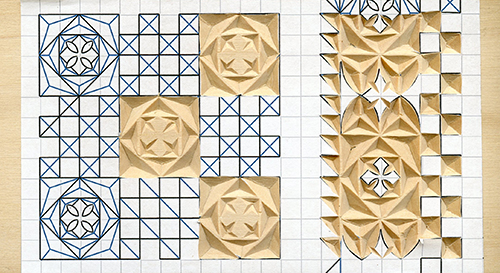 Spray adhesives allow you to temporarily glue the printed pattern directly to your wood board. You can cut your chips following the printed paper lines. After the chip carving is complete the remaining pattern paper can be lifted from the wood, leaving a clean, unblemished background.
Spray adhesives allow you to temporarily glue the printed pattern directly to your wood board. You can cut your chips following the printed paper lines. After the chip carving is complete the remaining pattern paper can be lifted from the wood, leaving a clean, unblemished background.
Read and follow the directions of the label for the best results when using spray adhesives. After the pattern has been affixed to the wood allow the paper to dry completely before you begin your cutting steps.
Advantages – By using a printed, adhered pattern you know that each chip cutting line is absolutely accurate. The bright white of the paper and the black chip outlines makes it easy to know where you have cut and where you still need to work. When the pattern is removed the background wood is clean, there will be no tracing or pencil lines to remove.
Disadvantages – Spray adhesives can become permanently affixed to your wood. Do a test sample on a practice board before you use this method on your larger project. Be sure to clean the nozzle of your spray adhesive can before you coat your pattern paper, a clogged nozzle can cause your spray to become uneven in coverage and it can leave small clumps of adhesive that are hard to cut. Spray adhesive patterns can come loose during the cutting steps.
This often happens where one chip lies against another. The loose side of paper can both block your view of your next cut as well as get in the way of the knife blade. If this happens lightly score the pattern paper along the outer lines of the chip you are cutting. This releases just the paper chip so that you can remove it. Now cut along the score lines.
Simplifying the Pattern
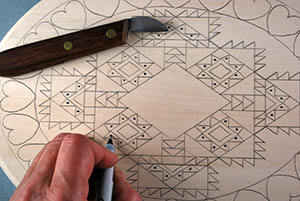 As you view the free chip carving patterns that are being offered with this seminar you will note that the outer lines of each chip is marked with a black line. The inner cuts that make the well of the chip are marked with blue lines. If you are tracing or graphing your pattern the inner lines do not need to be transferred to your board. Instead, after the outer lines have been graphed with a #4 soft pencil or a fine point marker, place one small dot inside the chip to note where the center point of the chip well will be. One dot, centered in the chip well will note a three or four-sided chip cut. One dot placed in one corner of the chip well will note a straight-wall cut where the third chip wall slopes into the corner.
As you view the free chip carving patterns that are being offered with this seminar you will note that the outer lines of each chip is marked with a black line. The inner cuts that make the well of the chip are marked with blue lines. If you are tracing or graphing your pattern the inner lines do not need to be transferred to your board. Instead, after the outer lines have been graphed with a #4 soft pencil or a fine point marker, place one small dot inside the chip to note where the center point of the chip well will be. One dot, centered in the chip well will note a three or four-sided chip cut. One dot placed in one corner of the chip well will note a straight-wall cut where the third chip wall slopes into the corner.
Chip Carving Graph Paper
The two square girds below are 100 dpi for accuracy. Please click on each image to view the full-sized pattern. Save to your computer. You can Click and Print as many copies as you need. As we work through the practice board grids over the next few days I will be using a blank grid and pencil marking the chip motifs.
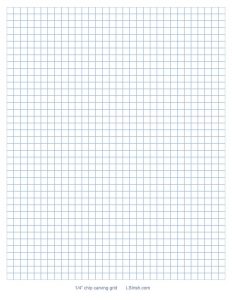 | 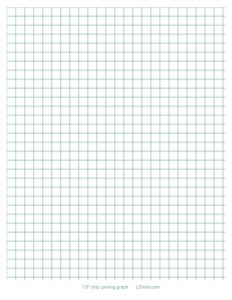 |
| 1/4″ chip grid | 1/3″ chip grid |
Today’s Free Chip Carving Pattern
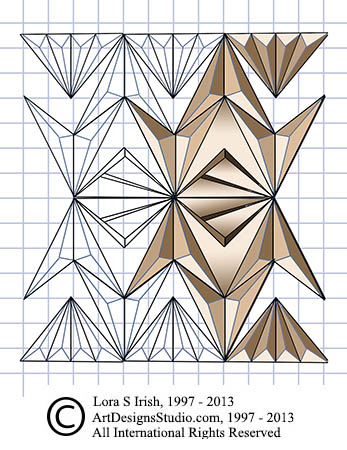 Next we will look at hand positions for cutting your chips, common problems, and positive and negative space in chip carving. We are getting very close to cutting a few chips. Thank you for reading!
Next we will look at hand positions for cutting your chips, common problems, and positive and negative space in chip carving. We are getting very close to cutting a few chips. Thank you for reading!
Pingback: Wood Carving Free Projects, Lora Irish Books | LSIrish.com
Pingback: Seminars - Chip Carving, Pyrography, Spoon Carving. | LSIrish.com
Pingback: Chip Carving Common Mistakes Free Seminar | LSIrish.com